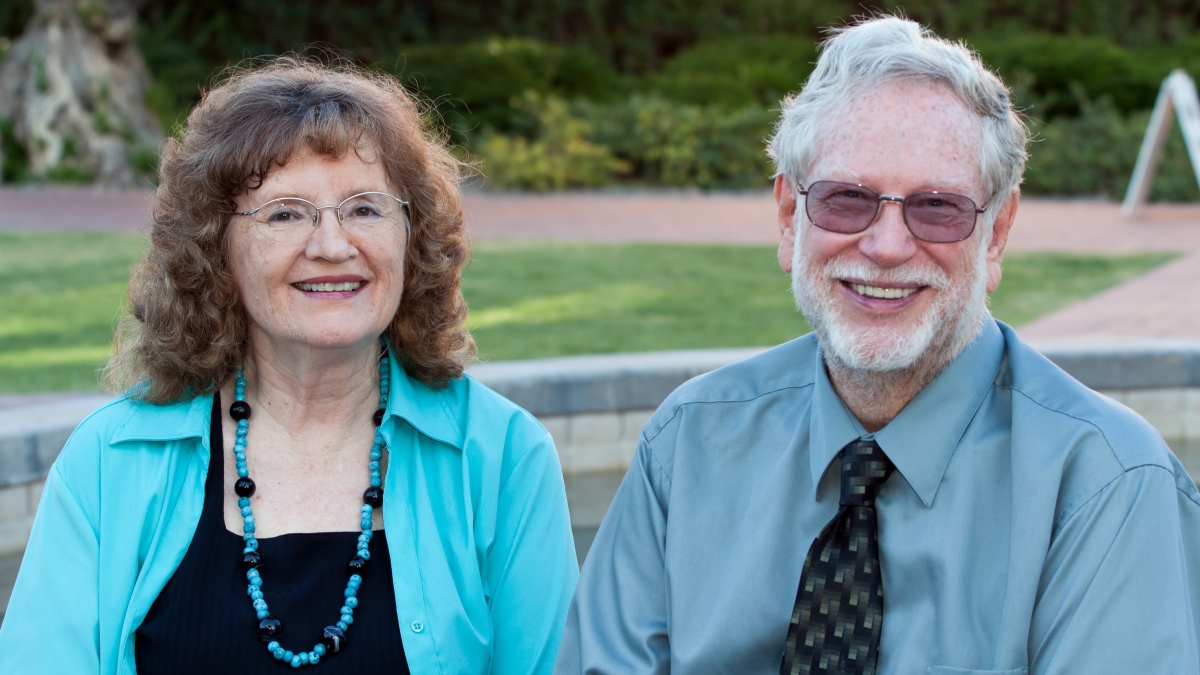Humor experts want to hear your jokes ... no joke

Don and Alleen Nilsen are serious about this: They want to hear your jokes, particularly the ones you helped create.
“Now that we’ve retired from teaching at ASU, we want to write a book focusing on the changing nature of humor and how people are no longer happy to sit back and laugh when someone tells a ‘canned joke,’" the humor-loving couple said.
“Today, people want to participate in the creation of the humor they laugh at. We would love to hear examples or opinions from friends, colleagues, former students and anyone who enjoys a good laugh.”
The Nilsens, who both were professors in the English Department at Arizona State University, are co-founders of the International Society for Humor Studies, whose members are interested in “how humor varies from country to country, or according to vocation, age, region, ethnicity or other markers."
Don Nilsen offers these examples of the type of humor they are looking for:
Hot Potato:
“This is like the game children play when sitting in a circle and tossing a ball from one player to another pretending that it is too hot to keep. The idea is not to be caught with it when the whistle blows. With humor, someone starts a joke, then someone else in the crowd adds to it and so does someone else,” Nilsen said.
“For example,” Nilsen said, “when Alleen was a loaned executive to the Board of Regents, she remembers one of our universities proposing a program devoted to race horses. Even before everyone at the table had received their copy of the proposal, someone said ‘Whoa!’ This was followed by such other comments as, ‘Don’t let this one get out of the gate!’ and 'I wouldn’t bet on its success!’
“By the time more than half of those voting had added a joking comment, the fate of the proposal was sealed. Of course the regularly scheduled 20-minute discussion was held, followed by a vote in which the proposal was formally shelved. The announcement was made with the comment ‘Thank goodness, we won’t be saddled with this one.’"
The world’s longest running joke:
“Arizona has a law that an elected official cannot be impeached until having been in office for six months. When in 1986, Evan Meacham was elected Arizona’s governor, he received a plurality, but not a majority of the votes. Even before his inauguration people were joking about his controversial decisions and the inadvertent remarks he made. This went on for a full six months, after which he was impeached.
“Two books of Meacham jokes were published, and he was featured in several national news stories. Gary Trudeau, for example, devoted a weeklong comic strip to him. Can you tell us about other 'long-running' jokes – maybe in your family, high school, church or community?”
Internet humor:
“We think one of the reasons for the success of social networking (Facebook, Twitter, YouTube) and of the jokes (both written and in pictures) that viewers pass on to their friends, is that they invite participation.
“Have you adapted or helped create one of these jokes? What is the funniest incident you remember receiving?"
Participatory humor:
“Besides planning surprise parties, have you ever participated in other forms of creative, group humor, such as practical jokes, tricks or campaigns? If so, we would love to hear about them,” Nilsen said.
“Humor is a bonding thing,” the couple said, “and humor varies from culture to culture. In Japan, for example, there is no humor during working hours, and in the Navajo culture, humor is so integrated into their society that you can’t separate it.”
What happens when someone tells a joke?
Two concepts apply, Nilsen said – agenda and salience.
“Agenda” means that in order for a joke to be significant, it must matter to the audience. “Old people can relate to geriatric jokes; Hispanics can relate to Hispanic jokes, etc.,” Nilsen said. “But the problem here is when people might relate too much. Hardly anyone likes the feeling of being the target of the joke.’”
Alleen Nilsen added, “This might be explained by what author Max Shulman said, that if he writes a joke and the reader says ‘Ah ha! I know someone like that,’ the reader will laugh. But if he writes a joke that causes a reader to say, ‘Oh, no, that’s me!' then the reader won’t laugh.”
"Salience" means that a cartoonist, for example, looks at a person and decides which physical features are most salient – most significant – and then exaggerates those features, Nilsen explained. “That's why caricatures of Jay Leno always have a big chin – much bigger than his chin is in real life.”
The end of the joke is key, the Nilsens said. “A joke’s punch line requires you to reanalyze the joke. It’s an epiphany, a sudden insight. Humor gently pushes boundaries.”
Acceptable humor has to be humane, they added. “It should never target an attribute or weakness the person can’t change.”
With their new book, the Nilsens hope to “communicate the idea that humor is in every part of our life,” they said.
Anyone with an example of humor to contribute should send it to the Nilsens at don.nilsen@asu.edu.
Now, did you hear the one about the horse that goes into the bar?